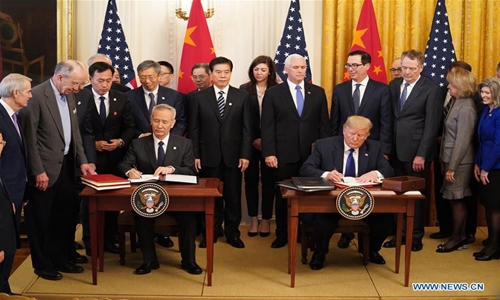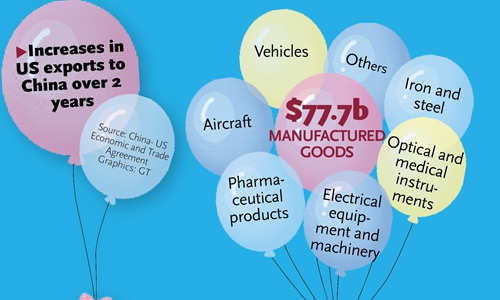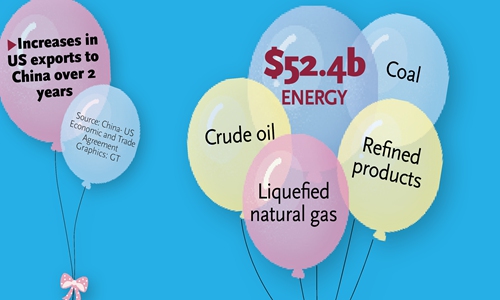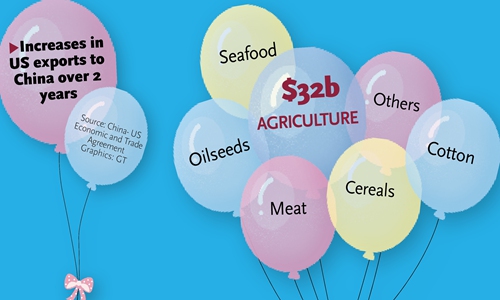HOME >> SOURCE
Text of phase one deal balanced, fair: experts
By Wang Cong and Ma Jingjing Source:Global Times Published: 2020/1/16 17:35:38
Agreement includes dispute-resolution mechanism

Chinese Vice Premiere Liu He and US President Donald Trump signed the phase one trade deal at the White House on Wednesday (US time)
The phase one trade agreement between China and the US reflected what Chinese officials have long stressed - that any deal must be balanced and fair and include initiatives that, if properly executed, could help address disputes and avoid further confrontation, Chinese analysts said on Thursday.After nearly two years of fighting, Chinese Vice Premier Liu He and US President Donald Trump signed the phase one trade agreement in a lengthy grand signing ceremony at the White House on Wednesday (US time).
The deal was largely in line with expectations. Among the main points is China's pledge to increase imports of US agricultural, manufacturing and energy products by $200 billion over the level of $186 billion in 2017.
"This should not be too difficult," Liang Ming, said director of the Chinese Academy of International Trade and Economic Cooperation's foreign trade institute.
He noted that the pledge to increase imports of manufactured goods by $77.7 billion will include large machinery and China also has huge demand for crude and natural gas imports. "Prices of these US products are very competitive so we can't say China has been taken advantage of."
Furthermore, the agreement included terms about the US ensuring market supply, which could mean the US will lift bans on chip exports to China, Liang said. If it's the case, there is huge potential as China imports $300 billion worth of chips each year, he said.

Increases in US manufactured goods to China over the next 2 years

Increases in US energy products to China over the next 2 years

Increases in US Agricultural products to China over the next 2 years

Increases in US services products to China over the next 2 years
Apart from the purchases, the agreement also included terms on intellectual property rights (IPR) protection, technology transfer and market opening. Though much of it concerns what China needs to do, each term also asked for reciprocating actions from the US."The US largely confirmed that there would be equal treatment as China in IPR protection and technology transfer, which could be a tacit approval of Huawei going into the US market," Wang Wen, executive dean of Chongyang Institute for Financial Studies at Renmin University of China, told the Global Times, referring to the Chinese telecom company that has been blacklisted by US.
A crucial guarantee of the healthy development of China-US trade relations, the Trade Framework Group - led by the US trade representative and a designated vice premier of China - will be created to discuss the implementation of the phase one trade agreement and to settle disputes.
"The mechanism can help relieve distrust between the two countries. Once trust is built, the two sides are expected to resolve trade friction through dialogue and communication instead of imposing additional tariffs," Liang said, noting that he hoped the mechanism could be earnestly implemented to reduce serious trade confrontations between the two.
Along with the signing of the trade deal, a certain amount of the existing tariffs on Chinese products imposed by the US may be lifted in mid-2020, Liang said.
Currently, the US will maintain 25 percent tariffs on $250 billion worth of Chinese imports, along with 7.5 percent tariffs on $120 billion of Chinese imports, according to the Office of the US Trade Representative.